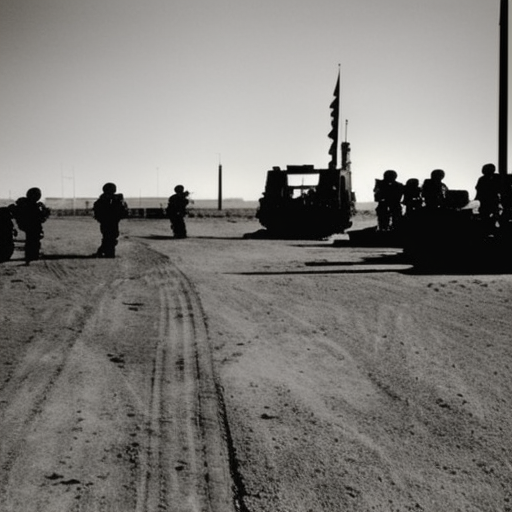Gulf War: A Summary
The Gulf War, also known as the Persian Gulf War, was a conflict that took place from August 1990 to February 1991. It was a result of Iraq’s invasion of Kuwait, which led to an international military response led by the United States and a coalition of other countries. The war had significant political, economic, and social consequences for the region and the world.
Background:
In August 1990, Iraq, under the leadership of Saddam Hussein, invaded Kuwait, claiming it as part of Iraq’s territory. This move was met with international condemnation, as it violated international law and threatened the stability of the region. The United Nations Security Council passed a series of resolutions demanding Iraq’s withdrawal from Kuwait, but Iraq refused to comply.
The Coalition Forms:
In response to Iraq’s invasion, the United States and a coalition of 34 countries formed to oppose Iraq’s aggression. The coalition included countries from Europe, the Middle East, and other parts of the world. The primary goal of the coalition was to liberate Kuwait and restore its sovereignty.
Air Campaign and Ground Offensive:
The Gulf War began with a massive air campaign, known as Operation Desert Storm, launched by the coalition forces in January 1991. The air campaign aimed to destroy Iraq’s military infrastructure and weaken its ability to resist. It involved extensive aerial bombardment of strategic targets, including military installations, communication centers, and infrastructure.
Following the air campaign, a ground offensive was launched in February 1991. Coalition forces, led by the United States, launched a swift and decisive attack on Iraqi forces in Kuwait. The ground offensive involved a combination of armored divisions, infantry units, and air support. The coalition forces quickly overwhelmed the Iraqi defenses, leading to the liberation of Kuwait in a matter of days.
Consequences:
The Gulf War had significant consequences for the region and the world.
Political: The war marked a turning point in the geopolitics of the Middle East. It demonstrated the willingness of the international community to intervene militarily to protect the sovereignty of smaller nations. The United States emerged as the dominant power in the region, with its military presence and influence increasing significantly.
Economic: The war had a profound impact on the global economy. Oil prices skyrocketed during the conflict, as Iraq’s invasion threatened the stability of oil supplies from the region. The war also led to significant damage to Kuwait’s infrastructure, which required extensive reconstruction efforts.
Social: The war resulted in the displacement of thousands of people, both Kuwaitis and foreign workers. Many Kuwaitis fled the country during the Iraqi occupation, and the liberation of Kuwait led to the return of these displaced individuals. The war also highlighted the use of advanced military technology, such as precision-guided missiles and stealth aircraft.
Legacy:
The Gulf War had a lasting impact on the region and the world. It set the stage for future conflicts in the Middle East, including the 2003 invasion of Iraq. The war also highlighted the limitations of military force in achieving long-term stability and resolving complex political issues. The consequences of the war continue to be felt in the region, with ongoing conflicts and tensions in the Middle East.
In conclusion, the Gulf War was a conflict that resulted from Iraq’s invasion of Kuwait. The international community, led by the United States, formed a coalition to oppose Iraq’s aggression. The war involved a massive air campaign followed by a ground offensive, leading to the liberation of Kuwait. The war had significant political, economic, and social consequences for the region and the world, shaping the geopolitics of the Middle East and highlighting the limitations of military force.












